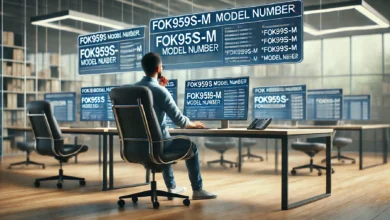Understanding PCB Components: The Backbone of Electronics

When it comes to electronics, few things are as crucial as the Printed Circuit Board (PCB). These unassuming boards are the heart of nearly every electronic device, from your smartphone to your microwave. The secret to their functionality lies in the PCB components, which are the small yet mighty parts that work together to make the whole system run smoothly. If you’ve ever wondered what goes into a PCB and why it’s so vital, you’re in the right place. In this article, we’ll dive deep into the world of PCB components and explore their importance in modern electronics.
What Are PCB Components?
At its core, a PCB is a flat board made of insulating material that houses various conductive pathways, known as traces, to connect different electronic components. PCB components are the parts that get mounted onto these boards, and they’re responsible for making the entire circuit function as designed.
The Basic Types of PCB Components
PCB components come in two major categories: passive and active.
- Passive Components: These are components that do not require an external power source to operate. Instead, they rely on the energy already present in the circuit. Common examples include resistors, capacitors, and inductors. These components are integral in controlling current, voltage, and other aspects of the signal passing through the PCB.
- Active Components: Unlike passive components, active components require an external source of power to operate. These include components such as diodes, transistors, and integrated circuits (ICs). Active components amplify or control electrical signals and are often responsible for processing information in complex systems.
Key PCB Components and Their Functions
There are dozens of components that can make up a PCB, each with its specific purpose. Let’s take a closer look at some of the most essential PCB components and what they do.
Resistors
Resistors are passive components that limit or regulate the flow of electrical current in a circuit. By providing resistance, they ensure that the current is not too high, which could damage sensitive components. They come in various sizes and values, allowing engineers to fine-tune the performance of a PCB.
Capacitors
Capacitors are another type of passive component, and their job is to store and release electrical energy. In a PCB, capacitors are often used to smooth out fluctuations in voltage, stabilize signals, or filter noise from the circuit. They play a crucial role in power supply systems and signal processing.
Inductors
Inductors, though less common than resistors and capacitors, are also essential in certain PCB designs. These components store energy in a magnetic field when current flows through them. Inductors are often found in power supplies, transformers, and RF circuits, where they help with voltage regulation and filtering.
Diodes and Transistors
Diodes and transistors are active components that help control the flow of electricity in a circuit. Diodes allow current to flow in one direction only, while transistors can amplify electrical signals or act as a switch. Both components are vital in digital circuits, amplifiers, and power supply systems.
Integrated Circuits (ICs)
Integrated circuits are perhaps the most complex of all PCB components. An IC is a set of multiple components (such as transistors, resistors, capacitors, etc.) integrated onto a single chip. ICs are the brains of many modern electronic devices, handling everything from processing data to managing power distribution. They come in various forms, including microcontrollers, operational amplifiers, and memory chips.
How PCB Components Are Mounted
PCB components can be mounted on a PCB in several ways, depending on the type of PCB and the manufacturing process. There are two primary methods for mounting PCB components: through-hole mounting and surface-mount technology (SMT).
Through-Hole Mounting
In through-hole mounting, components have leads (legs) that pass through holes in the PCB. These leads are then soldered onto the board’s opposite side, creating a strong mechanical and electrical connection. This method is more time-consuming and is typically used for larger components or for boards that require more robust connections.
Surface-Mount Technology (SMT)
Surface-mount technology involves placing components directly onto the surface of the PCB without the need for holes. SMT components are much smaller and lighter, making them ideal for modern electronics, which require compact designs and high-density circuits. SMT is the preferred method for manufacturing most consumer electronics today.
The Role of PCB Components in Circuit Design
PCB components play a vital role in the overall design and functionality of a circuit. When designing a PCB, engineers need to carefully select the right components based on the desired performance and the specific requirements of the device.
Signal Processing and Control
PCB components like capacitors, resistors, and transistors help control and manipulate electrical signals as they pass through the board. They ensure that the signals are clean, stable, and suitable for the device’s intended function. For example, in an audio amplifier, capacitors and resistors will be used to adjust the gain and filter out unwanted noise.
Power Management
In power supplies and voltage regulation circuits, components like inductors, diodes, and transistors work together to ensure that the correct voltage and current levels are maintained. This is especially important in devices that require a consistent power source, such as computers, smartphones, and medical equipment.
Thermal Management
Some PCB components, particularly active components like transistors, can generate a significant amount of heat during operation. To prevent overheating and ensure optimal performance, thermal management solutions such as heat sinks, thermal vias, and copper plating are often integrated into the PCB design. These components help dissipate heat and maintain the longevity of the board.
Why Choosing the Right PCB Components Matters
Choosing the right PCB components for a project can make the difference between a device that functions reliably and one that fails prematurely. The quality, type, and specifications of each component must match the requirements of the device to ensure smooth operation.
Component Compatibility
Not all PCB components are interchangeable. For instance, a resistor with too high a resistance could limit current flow too much, causing the circuit to malfunction. Similarly, choosing the wrong capacitor value could lead to poor signal filtering or unstable voltage regulation. Ensuring compatibility between components is a critical step in the design process.
Cost and Size Constraints
In modern electronics, cost and size constraints are a big deal. Components need to fit into the tight spaces available on the PCB while also staying within budget. This is why engineers often choose smaller components like SMT resistors and capacitors, as they help save space and reduce manufacturing costs.
Reliability and Durability
Reliability is paramount when selecting PCB components, especially in devices that are used in mission-critical applications like aerospace, medical, or automotive systems. Engineers must choose components that can withstand the environmental conditions they will face, such as temperature fluctuations, humidity, and vibration.
FAQs About PCB Components
1. What are the most common PCB components?
The most common PCB components include resistors, capacitors, diodes, transistors, and integrated circuits. These components are found in nearly every type of electronic device, ranging from consumer gadgets to industrial machines.
2. What is the difference between passive and active PCB components?
Passive components do not require an external power source and include items like resistors, capacitors, and inductors. Active components, such as diodes, transistors, and integrated circuits, require external power and can amplify or switch electrical signals.
3. How are PCB components mounted on the board?
PCB components are typically mounted using two methods: through-hole mounting and surface-mount technology (SMT). Through-hole mounting involves inserting leads through holes in the PCB, while SMT places components directly on the surface of the board.
4. Can I replace PCB components myself?
While it’s possible to replace some PCB components yourself, it requires a good understanding of electronics and soldering skills. For complex repairs, especially on modern devices with tiny SMT components, it is best to consult a professional.
5. Why are PCB components so small in modern electronics?
The miniaturization of PCB components is essential for creating smaller, more powerful, and energy-efficient electronic devices. Smaller components allow for denser circuit designs, which are critical for modern gadgets like smartphones, laptops, and wearables.
In conclusion, PCB components are indispensable in the functioning of modern electronics. From ensuring proper signal processing and power management to providing thermal regulation, these tiny but powerful parts are what make electronic devices work. Whether you’re designing a new product or just curious about how your gadgets function, understanding the role of PCB components is key to appreciating the complexities of the electronics around us.




